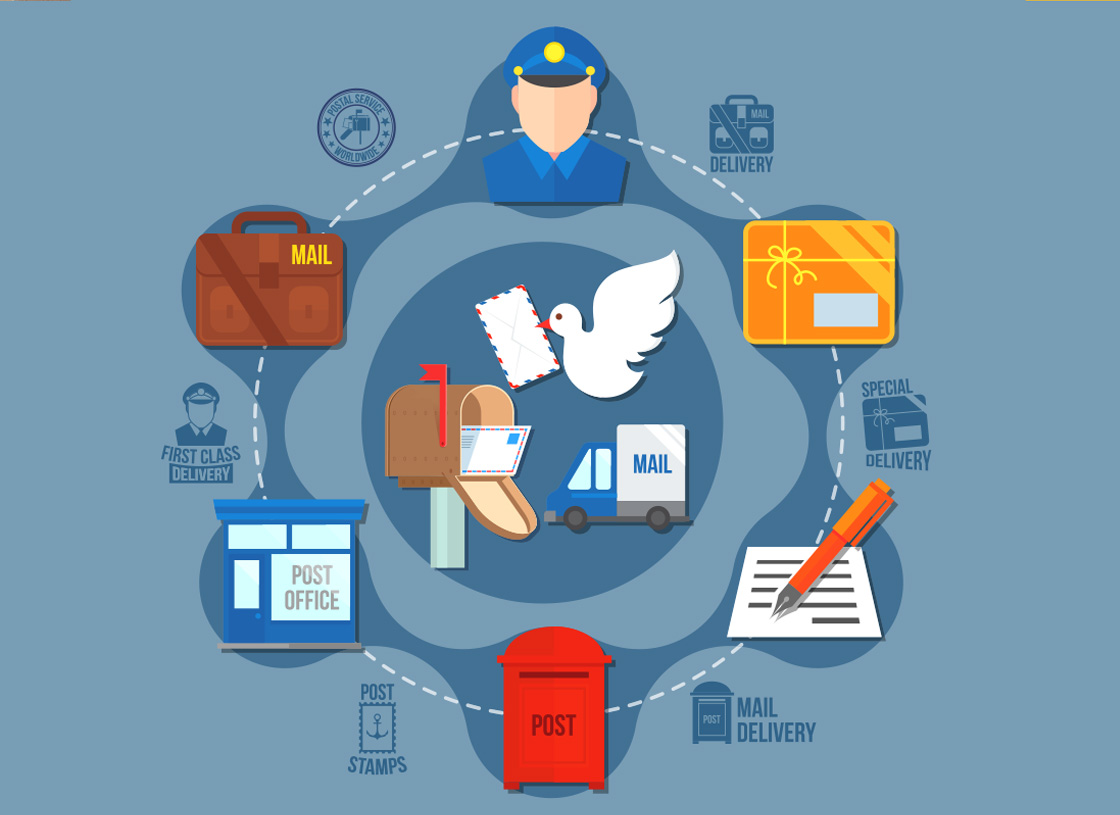Direct mail is a marketing technique that comes in just short of knocking on a prospect’s door yourself and handing them your ad. That part is actually done by the U.S. Postal Service. Then when it arrives at the home, there’s an 80 to 90 percent chance that your ad is going to get opened. This high percentage of homeowners ripping the envelope compares to 20 to 30 percent of people seeing the same message in their email inbox and clicking to read.
As your prospect scans the direct mail letter, the message registers more easily than it would online. Studies show that direct mail uses 21 percent less cognitive effort to absorb than processing a digital ad. And this message is easier to remember. Consumers have 70 percent higher brand recall when they’re exposed to a print ad as opposed to a digital version.
There’s also a solid chance your prospects will take a next step following the lead of your call to action. Response rate is higher than email, and once someone’s shown interest, more than half of consumers (56%) who were gearing up to respond went online or visited a physical location.
To make the most of your direct mail investment, it’s important to be strategic in each step. For example:
Establish your target audience. Who is receiving this mailing? Will you use your in-house list of customers and prospects or buy or rent a targeted list? Internal lists have the highest ROI, and that’s because you are known to them and have already built into a relationship equity. Other targeted lists, however, can also work well, especially if your own list is small.
Develop your offer. What problem is your prospect pool having, and how will your offer solve this problem? Once you know what you’re selling, work on how you’re going to present this case.
Write a persuasive letter. Your copy will need to grab attention with a strong benefit-promoting headline and be filled with benefit-rich copy. Remember, the most effective marketing messages take the customer’s point of view – not the company’s. So, you’d rather say “Improve the air your family is breathing” instead of “We provide a wide range of IAQ services.” Even when you’re talking about your company, you do so in a way that shows customers what’s in it for them. Write as if you’re talking to your customer about something that’s helpful for them to know, and write in a language the customer understands. Skip the technical jargon and keep your tone informal.
Use a professional (and usually simple) design. Your direct mail letter needs to look nice, but because it’s a letter, you don’t have to invest in a lot of design bells and whistles. Stick to simple, neat and easy to read. Use a headline and subheads for scanning, and make sure your call to action is easy to see.
Be timely and time-sensitive. Timing is everything in marketing. Obviously, you don’t offer heater repairs in mid-summer, but you could offer end-of-season furnace replacements as the heating season wraps up in early spring. Or push preseason replacements for air conditioning systems that barely made it through last summer. This is also a prime time for promoting preseason tune-ups and indoor air solutions for allergy sufferers.
While you’re being timely, don’t forget to be time-sensitive. To encourage prospects to act on a direct mail offer, it’s imperative that you add a sense of urgency. That can come in a quantity limit or time limit – such as a first-come, first-serve promotion that is available to the first ten customers who schedule an appointment, or limited-time-only offer that says respond within seven days to get the deep discount. As part of this push to response…
Create a strong call to action. Be clear on the next step you want prospects to take, whether it’s to visit your website, schedule an installation or give you a call today. Also, you can offer an incentive, such as a free gift or free estimate, to give motivation for response or offer a money-back guarantee that reduces their risk.
Make it easy on yourself by using a professional mailing service. From design to printing to list purchase to envelope stuffing to mailing, direct mail marketing has a lot of moving parts that need care and attention. Turn to experts for guidance on how to best manage your mailing.
Measure and fine-tune. Direct mail marketing hasn’t finished its work until you know how well it’s done. Be sure to have a system in place to track and measure response. Analyze what worked well and what missed the mark so you’ll know how to improve your marketing next time.
Make your direct mail part of an integrated campaign. Everything works better together. By combining your direct mail letter in a campaign that includes email, social and traditional marketing, you will lift response for each.
All of the steps used for direct mail today still fit within the 40-40-20 rule defined long ago by direct mail expert Ed Mayer. He identified three sections of direct mail by level of its importance: your audience is 40 percent of your success, your offer is another 40 percent and all other elements make up 20 percent of its effectiveness. The better you work to refine your strategy within these categories, the better you’ll be able to generate response.
Like all marketing, direct mail is part art and part science, and often involves a delicate balance of connecting the right audience to the right product or service at the right time. Unlike all marketing, however, direct mail stimulates the senses of sight, sound, touch and even smell. Its physical presence in the home is seen and felt. Prospects can hear the sound of the envelope tearing, and the smell of the paper is a sense in itself. And it can bring an emotional response that gets you a profitable ROI.

